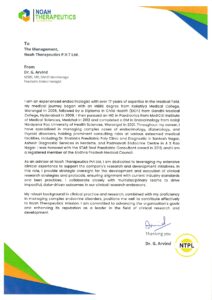
Mosquitoes are vital to the ecosystem we inhabit. They undergo a unique biological life cycle: male mosquitoes mostly consume nectar from flowers, while female mosquitoes need human blood to produce their eggs, as the blood provides essential proteins. When feeding, female mosquitoes inject saliva into their host’s bloodstream.
This situation contributes to the spread of several vector-borne diseases, including malaria, dengue, chikungunya and Zika virus infections. Some of these diseases have the potential to cause epidemics. Each year, millions of deaths occur worldwide due to vector-borne infections, with the majority of these fatalities occurring in developing countries.
To avoid mosquito bites and minimize the risk of vector-borne diseases, it’s crucial to understand their feeding behaviours.
UNDERSTANDING THE FEMALE MOSQUITO BITING HABITS:
The female mosquito, which thrives on human blood and therefore bites people, locates its target through both its vision and specialized antennas.
These specialized antennas are sensitive to detecting heat signals, carbon dioxide, moisture, and chemicals. By using both its vision and antennas, the female mosquito is drawn to certain individuals more than others for blood meals. Here, we explore key reasons why some people are more likely to attract mosquitoes.
Factors that influence mosquito attraction to humans include:
- Biological Factors
- Environmental factors.
- Habitual Factors.
1. BIOLOGICAL FACTORS:
Blood Group: Scientific research indicates that mosquitoes have a preference for biting individuals with certain blood types more than others. People with blood type “O” tend to attract more mosquitoes compared to those with other blood types. It is believed that specific chemicals like lactic acid associated with blood type are released through the skin, making these individuals more appealing to mosquitoes.
Body Heat: The antennae of female mosquitoes are heat-sensitive and can detect the temperature changes as small as 1 degree Celsius from a considerable distance. Humans who generate more body heat are more likely to attract mosquitoes. Individuals who are obese or highly athletic, due to their higher metabolism and increased heat production, tend to be more appealing to female mosquitoes.
Pregnancy: Pregnancy hormones boost metabolism and heat production in the body. This increased heat, along with a rise in body temperature, leads to a greater attraction for mosquitoes. Pregnant women released more volatile substances from their skin surface, allowing the mosquitoes to detect them more easily. Heavy breathing in the later stages of pregnancy increases carbon dioxide exhalation, which attracts female mosquitoes.
Body Odur:

Mosquitoes are drawn to human sweat, particularly to compounds like lactic acid and ammonia that it contains. As a result, you’re more likely to get bitten if you sweat a lot or spend time outdoors in hot weather.
Sweat, bacteria, and body oils can attract mosquitoes. Certain compounds in sweat, such as lactic acid, uric acid, and ammonia, can be particularly enticing.
Your skin is naturally home to a vast array of microscopic life, and these bacteria produce a unique scent when combined with sweat.
Research indicates that the types and quantities of bacteria on your skin can influence how many mosquito bites you receive.
Body Parts: Mosquitoes might be particularly attracted to ankles and feet because these areas are ideal for bacterial growth.
Genetics: Some people have a genetic predisposition to attract more mosquitoes due to the specific composition of their body chemicals.
Skin Chemicals: Different people produce different chemicals in their sweat and skin, influencing mosquito attraction. For example: lactic acid, uric acid and other compounds can make some people more appealing to mosquitoes.
Carbon Dioxide in exhaled air:
Mosquitoes are highly attracted to CO2, which is emitted when we breathe. They can detect CO2 from a significant distance and use it to locate potential hosts.
Mosquitoes antennae are sensitive to the levels of carbon dioxide in the air. Therefore, individuals with higher metabolic rates who produce more carbon dioxide in their breath tend to attract more mosquitoes.
Fast breathing, increased metabolism, and excessive sweating are interconnected factors that collectively contribute to attracting female mosquitoes.
- HABITUAL FACTORS:
Clothing: Mosquitoes are more attracted to clothes darker especially Black and Red than light-fingered ones. Also, wearing half-sleeved clothes / short clothes can give more surface area for biting.
- Anopheles species of mosquito that are responsible for causing Malaria prefer to bite on the legs.
- Aedes, a species of mosquito that is responsible for causing Dengue, prefers to bite on the hands rather than the legs.


Preventive Measures: Hence, it is advisable to wear full clothes during monsoons/fever epidemics. Also, wearing light-coloured clothes can be helpful in escaping the eyes of the mosquitoes.


Alcohol consumption: Alcohol consumption raises body heat, boosts metabolism, and increases sweating, all of which enhance attraction to female mosquitoes.
Preventive Measure: Avoid alcohol and alcohol containing products.
Cosmetics: Cosmetics containing lactic acid may attract mosquitoes because CO2 can trigger mosquitoes to enter an active host-seeking state.

Preventive Measure: Avoid cosmetics containing lactic acid chemical.
Lactic acid: C3H6O3
Food Habits: In particular, eating sweet, salty, spicy, or potassium-rich foods is believed to attract more mosquitoes.

Preventive Measures: Avoid eating sweet, salty, spicy, or potassium-rich foods is believed to attract more mosquitoes.
3. ENVIRONMENTAL FACTORS:
Stagnant Water: Stagnant water is a prime breeding ground for mosquitoes because it provides the perfect environment for their larvae. Female mosquitoes lay their eggs in or near water.
Preventive Measure: Keep your water sources clean and cover them with lids.
Light: They avoid daylight at all costs because sun exposure can dehydrate and kill Some UV lights like blue tone attracts mosquitoes.




Preventive Measure: Avoid blue tone lights in your houses and replace your outdoor lights with yellow bug lights which tend to attract fewer mosquitoes than ordinary lights.
Hygiene Conditions: If we don’t maintain proper hygiene, it can attract mosquitoes.
Preventive Measure: Maintain proper hygiene by cleaning floors, doors, and walls twice a week to avoid dust buildup and cobwebs.
Garbage and Waste: Accumulation of garbage and other waste materials not only provides breeding sites but also can attract mosquitoes by offering organic matter that decomposes and creates a suitable environment for larvae.
Preventive Measure: Keep your surroundings clean and ensure proper disposal of waste.
Poor Drainage: Areas with poor drainage systems can become breeding grounds for mosquitoes. Water that does not flow away properly and remains in places like clogged drains or ditches can attract mosquitoes.
Preventive measure: Pour a small amount of kerosene into drainages. The kerosene forms a thin layer that helps to prevent mosquitoes from breeding. Additionally, ensure that drainages are properly covered with lids.





